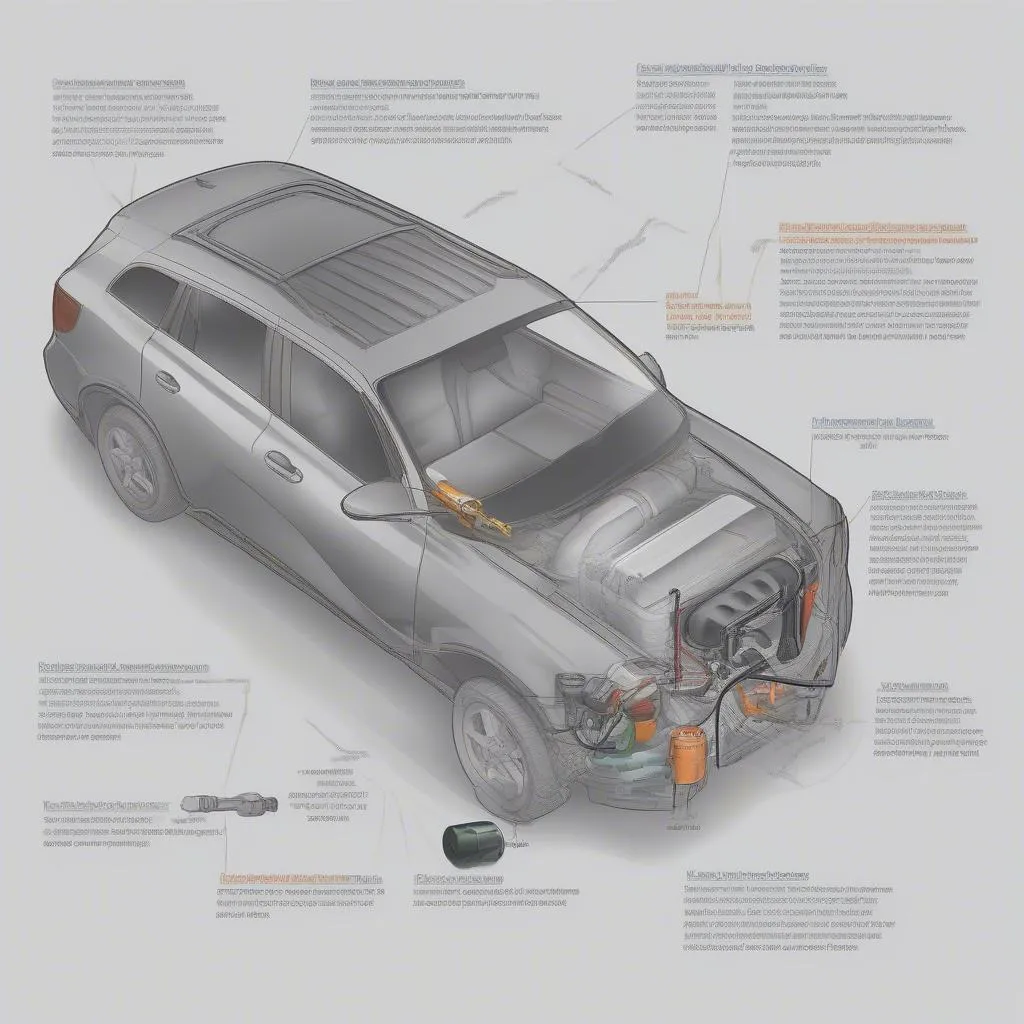Performing a VCDS force DPF regeneration can be a crucial maintenance procedure for diesel engine vehicles. This guide will provide a detailed explanation of what DPF regeneration is, why it’s necessary, and how to safely perform a forced regeneration using VCDS.
Understanding DPF Regeneration
DPF stands for Diesel Particulate Filter. This filter traps soot and other harmful particles from the exhaust gases, preventing them from polluting the atmosphere. Over time, the DPF accumulates soot and requires cleaning, a process known as regeneration. There are two types of regeneration: passive and active. Passive regeneration occurs naturally during highway driving at higher speeds and exhaust temperatures. Active regeneration happens when the engine control unit (ECU) detects a high soot load and initiates a process to increase exhaust temperatures, burning off the accumulated soot. When these automatic processes fail, a forced DPF regeneration using diagnostic software like VCDS becomes necessary. Knowing when and how to perform a VCDS force DPF regeneration is essential for maintaining the health and performance of your diesel engine.
Why VCDS Force DPF Regeneration?
Sometimes, the normal regeneration process is interrupted or insufficient. Short journeys, frequent stop-start driving, or faulty sensors can prevent the DPF from reaching the necessary temperature for effective regeneration. This can lead to a clogged DPF, reduced engine performance, increased fuel consumption, and even costly repairs. A VCDS force DPF regeneration allows you to manually initiate the regeneration process, overriding the ECU’s automatic controls. This can be a valuable tool for clearing a partially blocked DPF and restoring engine performance. However, it is crucial to understand the process and perform it correctly to avoid potential damage. Similar to vcds dpf reset, forcing a DPF regeneration requires careful consideration and adherence to proper procedures.
How to Perform a VCDS Force DPF Regeneration
Before starting a forced regeneration, it’s vital to ensure certain conditions are met. The vehicle should have sufficient fuel, a healthy battery, and no other fault codes present that could interfere with the regeneration process. The procedure itself involves accessing the engine control module through VCDS, entering the correct security access code, and then initiating the regeneration function.
- Connect your VCDS interface to the vehicle’s OBD-II port.
- Turn the ignition on, but do not start the engine.
- Open the VCDS software and select the correct vehicle model.
- Go to “Select Control Module” and choose “Engine.”
- Navigate to “Basic Settings” and locate the DPF regeneration function. You may need vcds security access code dpf to access this function.
- Follow the on-screen prompts to initiate the regeneration process.
- Monitor the soot level and other relevant parameters during the regeneration.
- Once the regeneration is complete, check for any fault codes and clear them if necessary.
This information is for guidance only and may vary depending on the specific vehicle model and VCDS software version. Always consult the vehicle’s service manual and the VCDS documentation for detailed instructions and safety precautions. This procedure shares some similarities with a vcds force regen, but understanding the specific parameters related to the DPF is crucial for successful regeneration.
When Not to Force a DPF Regeneration
While a VCDS force DPF regeneration can be a useful tool, it’s essential to recognize situations where it should be avoided. If the DPF is physically damaged, excessively clogged, or if there are other underlying engine problems, forcing a regeneration can worsen the situation. In such cases, professional diagnosis and repair are necessary. Understanding these limitations is key to avoiding further damage and ensuring the longevity of your diesel particulate filter. Just like vw dpf regeneration vcds, correctly identifying the root cause of DPF issues is paramount before attempting any forced regeneration.
Conclusion
VCDS force DPF regeneration is a powerful technique for maintaining the health of your diesel engine. By understanding the process, following the correct procedures, and knowing when to avoid it, you can effectively manage DPF issues and prevent costly repairs. Proper maintenance and timely intervention are crucial for ensuring optimal engine performance and longevity. Remember to consult the relevant documentation and seek professional assistance when necessary. For more information regarding resetting DPF related values, you can refer to our guide on vcds dpf soot level reset.
FAQ
- How long does a VCDS force DPF regeneration take? Typically, it takes between 20 and 30 minutes.
- Can I drive the car during a forced regeneration? No, the car should be stationary during the process.
- How often should I perform a forced DPF regeneration? Only when necessary, when active and passive regenerations are unsuccessful.
- What are the signs of a blocked DPF? Reduced engine performance, increased fuel consumption, and warning lights on the dashboard.
- Is it safe to perform a forced DPF regeneration myself? Yes, if you follow the correct procedures and precautions.
- What should I do if the forced regeneration fails? Consult a qualified mechanic for further diagnosis and repair.
- How can I prevent DPF issues in the future? Avoid frequent short journeys and ensure the engine reaches operating temperature regularly.
Need further assistance? Contact us via Whatsapp: +1 (641) 206-8880, Email: CARDIAGTECH[email protected] or visit us at 276 Reock St, City of Orange, NJ 07050, United States. Our 24/7 customer support team is ready to help.

